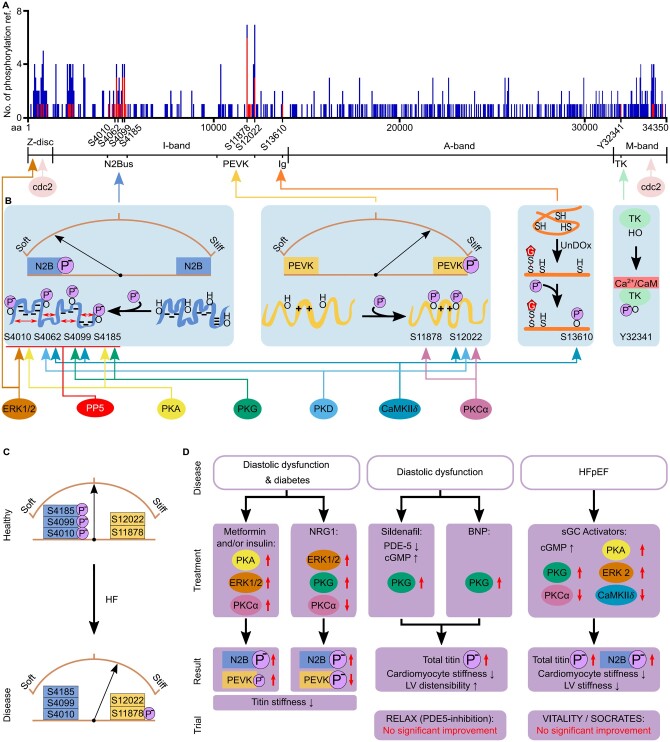Figure 5.
Where and how titin becomes phosphorylated, how this affects titin stiffness, and the role titin phosphorylation changes play in heart disease. (A) The number of times a titin phosphorylation site has been referenced (ref.) in the literature from either high-throughput (mass spectrometry; blue) or low-throughput, site-specific (antibody detection, mutagenesis; red) detection in human heart tissue. Data obtained from www.phosphosite.org.83 Note that phosphosite S4062 is currently not detected in this database but has been added based on the publication by Ref.95 (B) Specific phosphorylation sites detected in different regions of titin, known PKs/phosphatases involved, and differential effects of I-band titin phosphorylation on titin stiffness. (C) Hypo-phosphorylation of the N2Bus and hyper-phosphorylation of constitutively expressed PEVK titin are thought to increase titin stiffness in HF. (D) Proposed treatment strategies in pre-clinical tests aimed at correcting titin phosphorylation in animal models of heart disease, to reduce titin-based cardiac stiffness. ‘Trial’ highlights results of large clinical trials on human HF patients using the respective drugs. Brown arches depict titin spring stiffness. aa, amino acid; BNP, B-type natriuretic peptide; CaM, calmodulin; CaMKIIδ, Ca2+/calmodulin-dependent protein kinase IIδ; cGMP, cyclic guanosine monophosphate; ERK, extracellular signal-regulated kinase; HF, heart failure; HFpEF, heart failure with preserved ejection fraction; Ig, immunoglobulin-like; LV, left ventricular; NRG1, neuregulin 1; PDE-5, phosphodiesterase type 5; PKA, protein kinase A; PKCα, protein kinase Cα; PKD, protein kinase D; PKG, protein kinase G; PP5, serine/threonine protein phosphatase 5; sGC, soluble guanylyl cyclase; TK, titin kinase domain; UnDOx, unfolded domain oxidation.

